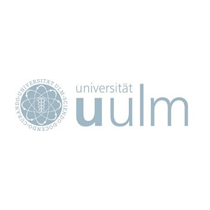Ulm University
Universität Ulm, Ulm, GermanyGeneral Information
The Institute of Anatomy and Cell Biology is part of the medical faculty at Ulm University (UULM). It is involved in research and teaching in the health sciences. Research mainly focuses on the basic characterization of excitatory synapses especially with respect to neurodegenerative and neuropsychiatric diseases. A special focus lies on the role of mutations within the postsynaptic molecule Shank leading to behavioural alterations of the autism spectrum. Here we are working with different model system including neuronal culture, drosophila, xenopus and transgenic/KO mouse and rat lines. We are also producing and analyzing human neuronal cells via iPS cell lines generated from patient’s hair keratinocytes. Moreover, we are mapping the expression of different molecules (including Shank) in the human brain. With respect to teaching the Institute is mainly involved in educating students (especially gross anatomy) in the preclinical part of the following courses of studies: Medicine, Dentistry, Molecular Medicine, Molecular and Translational Neuroscience.
For over 15 years, the lab has been working on the molecular structure and plasticity of postsynaptic densities (PSD) as part of excitatory synapses. We cloned and characterized several PSD molecules including ProSAP/Shank, ProSAPiP1, LAPSER1 and the Spar family of proteins. We were able to analyze the function of the molecules (as well as the mutated forms that are related to autism spectrum disorders/close cooperation especially with Thomas Bougeron, Paris) and provided information on the molecular and cellular pathology of these mutations in disease.
Role in AIMS-2-TRIALS
Within AIMS-2-TRIALS we are especially focusing on sensitive time windows for the development of neuropsychiatric conditions as well as on genetic and environmental factors that might determine the severity of a neurological or psychiatric disorder.

Tobias Böckers
Professor








